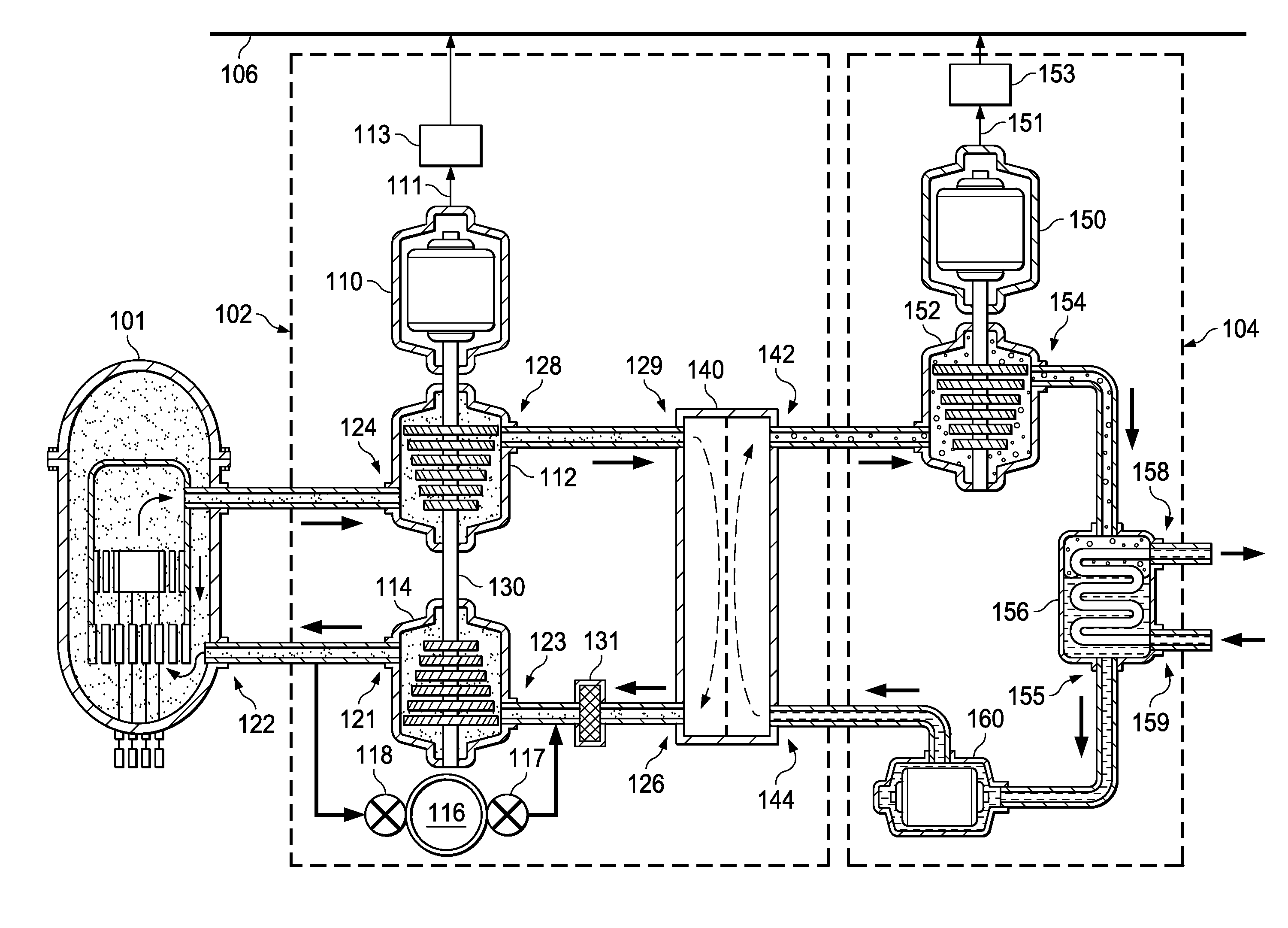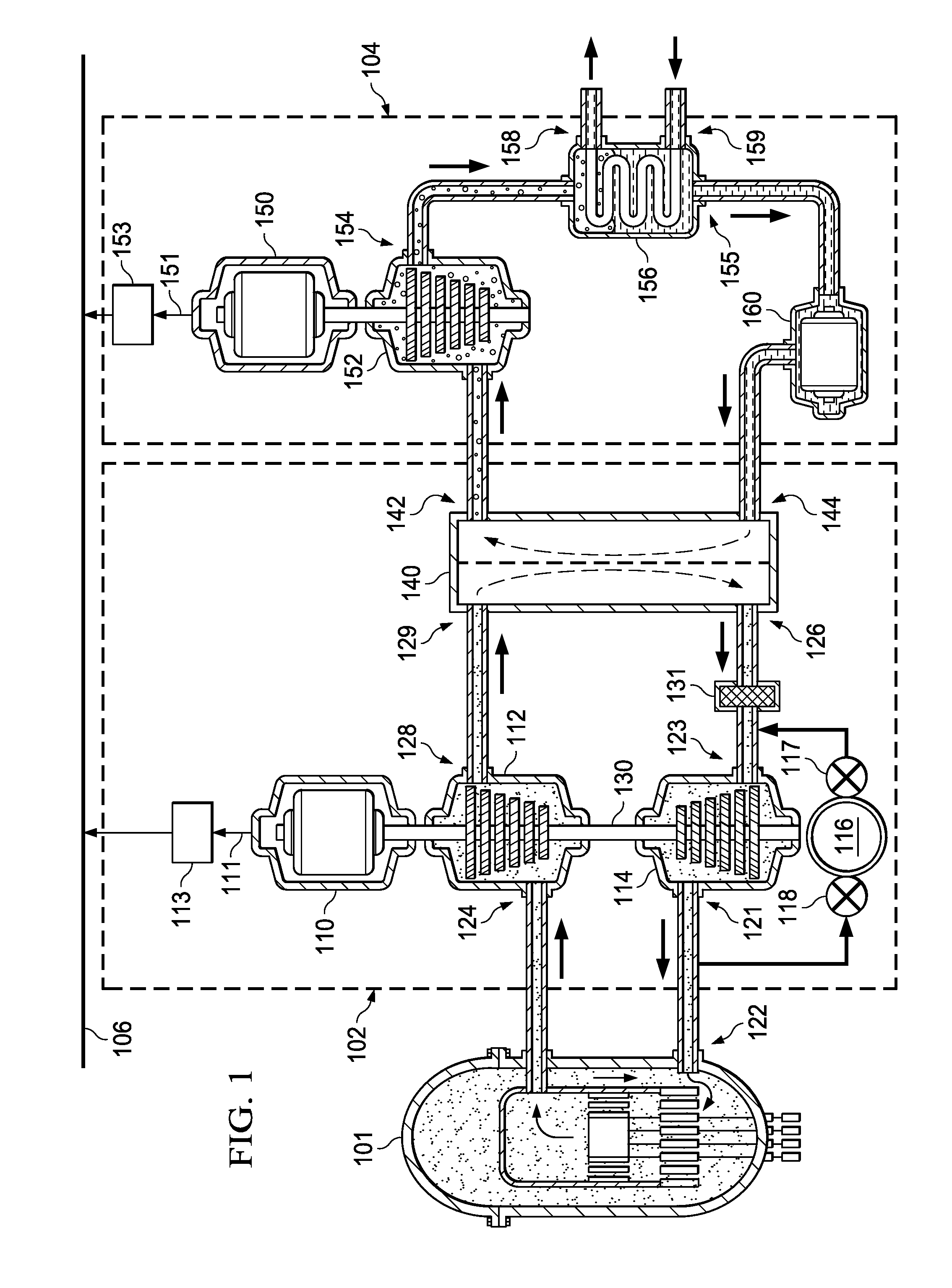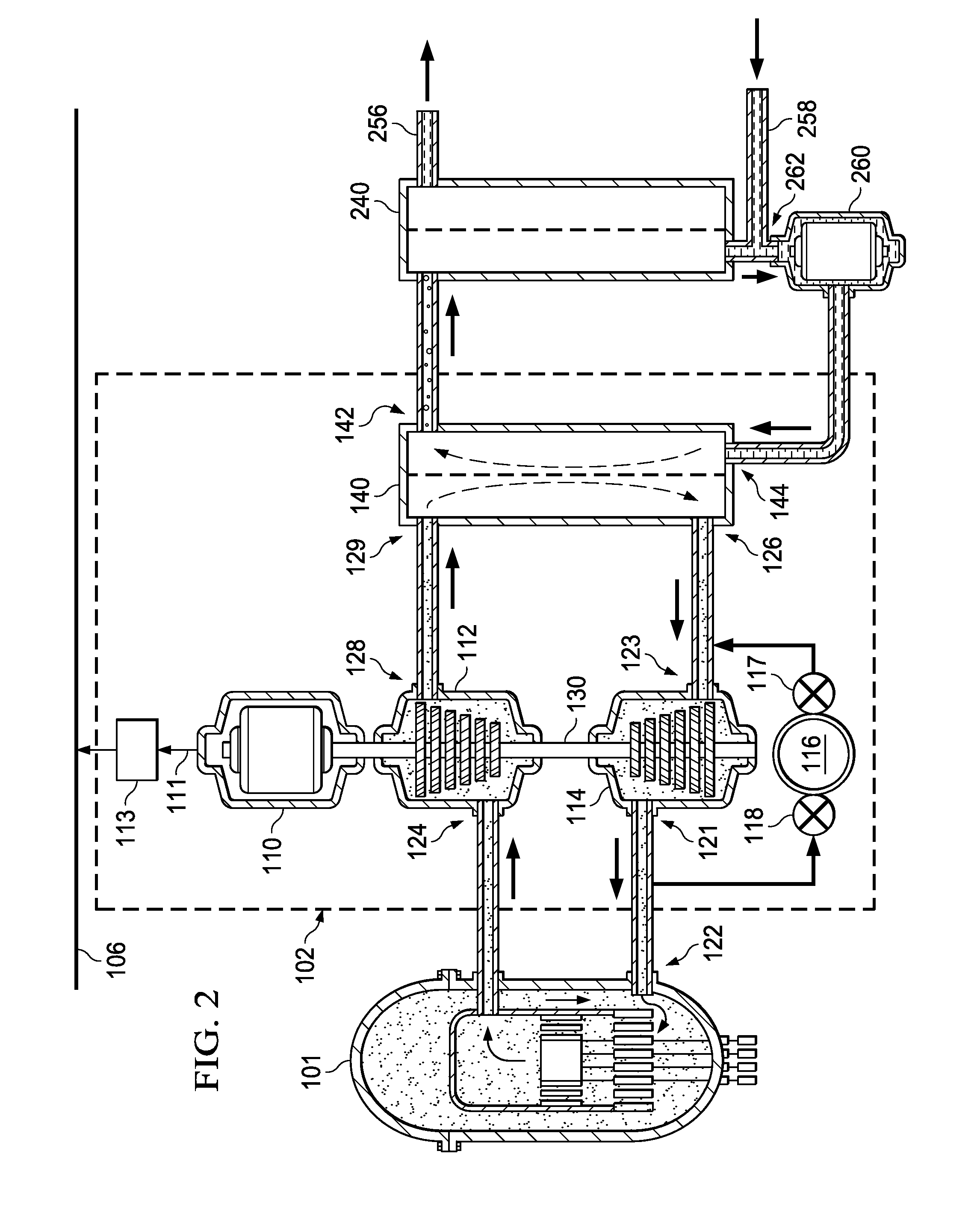High efficiency power generation system and system upgrades
a power generation system and high efficiency technology, applied in the field of high efficiency power generation system and system, can solve the problems of carbon dioxide, a climate changing gas, virtually impossible to economically eliminate in power-generating facilities, coal reduces but does not eliminate carbon dioxide, and is expensive to extra
- Summary
- Abstract
- Description
- Claims
- Application Information
AI Technical Summary
Benefits of technology
Problems solved by technology
Method used
Image
Examples
Embodiment Construction
[0024]The making and usage of the present exemplary embodiments are discussed in detail below. It should be appreciated, however, that the embodiments provide many applicable inventive concepts that can be embodied in a wide variety of specific contexts. The specific embodiments discussed are merely illustrative of specific ways to make and use the systems, subsystems and modules associated with a process for producing a thermal power source.
[0025]Combined gas / steam cycle power generation employing open Brayton-closed Rankine combined cycles includes both fuel-burning gas turbine and fuel-burning steam turbine generators. Hot turbine exhaust energy is recovered in a boiler to partially generate steam and superheated steam of a steam power plant. A combined-cycle power generation arrangement, however, requires a full complement of complex and costly components and controls, with full facility costs of both a high performance gas turbine and a complete steam power plant. There remains...
PUM
| Property | Measurement | Unit |
|---|---|---|
| pressures | aaaaa | aaaaa |
| temperatures | aaaaa | aaaaa |
| temperatures | aaaaa | aaaaa |
Abstract
Description
Claims
Application Information
 Login to View More
Login to View More - R&D
- Intellectual Property
- Life Sciences
- Materials
- Tech Scout
- Unparalleled Data Quality
- Higher Quality Content
- 60% Fewer Hallucinations
Browse by: Latest US Patents, China's latest patents, Technical Efficacy Thesaurus, Application Domain, Technology Topic, Popular Technical Reports.
© 2025 PatSnap. All rights reserved.Legal|Privacy policy|Modern Slavery Act Transparency Statement|Sitemap|About US| Contact US: help@patsnap.com



